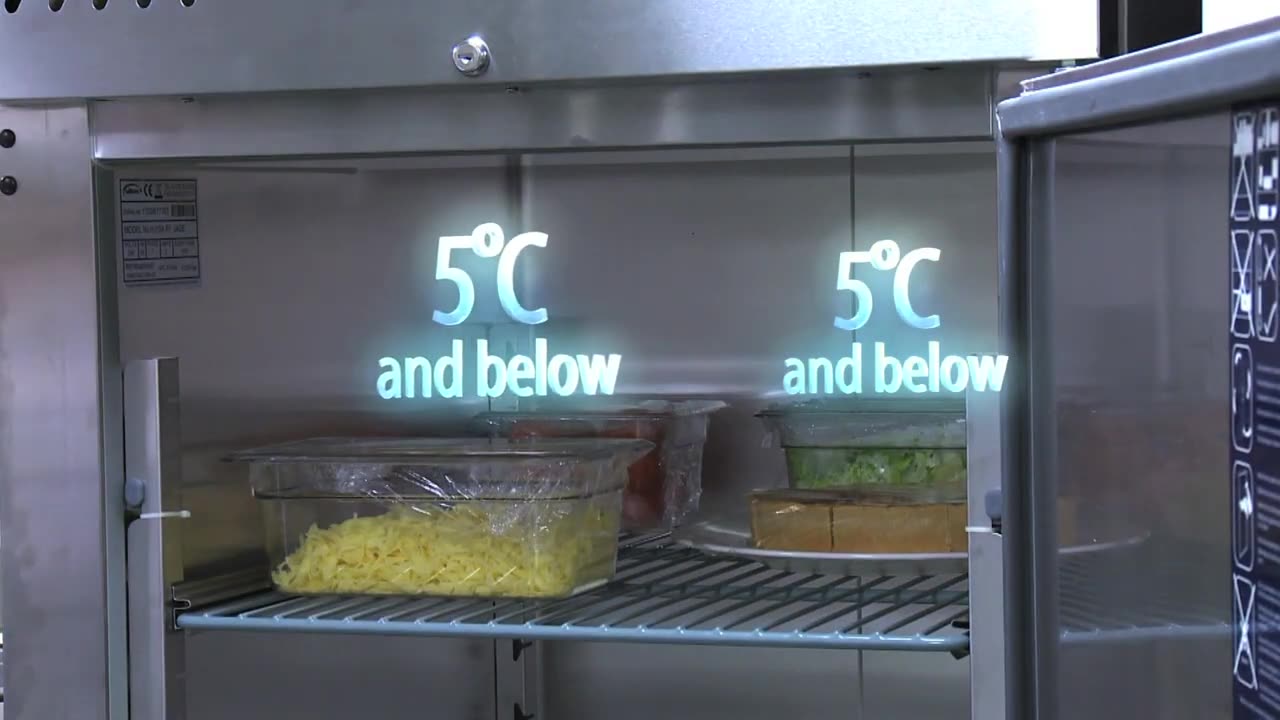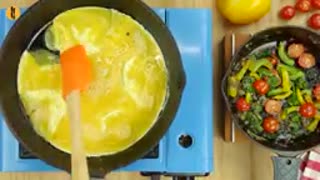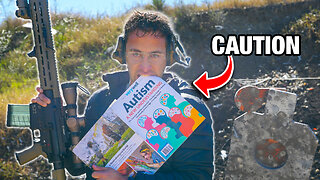Premium Only Content

Food safety coaching (Part 7)_ Chilled storage and display
### **Food Safety Coaching (Part 7) – Chilled Storage and Display**
Proper chilled storage and display are critical for maintaining food safety, especially for perishable and high-risk foods. Storing and displaying food at the correct temperature slows bacterial growth and preserves freshness, ensuring food remains safe for consumption.
---
### **Why Chilled Storage and Display Matter**
1. **Prevents Bacterial Growth:**
- Harmful bacteria thrive in the "danger zone" between **5°C and 63°C**. Keeping food below 5°C inhibits bacterial multiplication.
2. **Preserves Quality:**
- Proper chilling maintains food’s texture, taste, and nutritional value.
3. **Reduces Waste:**
- Slows spoilage, extending the shelf life of food.
---
### **Best Practices for Chilled Storage**
#### **1. Maintain the Right Temperature**
- Refrigerators should operate at **≤5°C**.
- Use a **thermometer** to monitor temperature regularly.
- Freezers should operate at **-18°C or below** for frozen foods.
#### **2. Store High-Risk Foods Correctly**
- Place perishable items (e.g., meat, poultry, dairy, seafood) in the coldest part of the fridge.
- Keep cooked and ready-to-eat foods separate from raw foods to prevent cross-contamination.
#### **3. Use Airtight Containers or Wraps**
- Store food in sealed containers or wrap them tightly to prevent moisture loss and contamination.
#### **4. Avoid Overloading the Fridge**
- Overcrowding prevents cold air from circulating, leading to uneven cooling.
#### **5. Organize Based on Food Type**
- Place raw meat, poultry, and seafood on the bottom shelf to prevent juices from dripping onto other foods.
- Store ready-to-eat foods and leftovers on the top shelves.
#### **6. Label and Date Stored Food**
- Mark containers with the date of storage to track freshness.
- Follow the **First In, First Out (FIFO)** principle to use older food first.
---
### **Best Practices for Chilled Display**
#### **1. Maintain Display Temperatures**
- Ensure chilled display units keep food at **≤5°C**.
- Use built-in thermometers to monitor and adjust the temperature as needed.
#### **2. Regularly Check Food Temperatures**
- Use a probe thermometer to verify food temperatures, especially for prepackaged or bulk items.
#### **3. Avoid Overfilling Display Units**
- Allow cold air to circulate around the food to maintain consistent temperatures.
#### **4. Rotate Stock Frequently**
- Replace displayed food with fresh stock regularly to maintain quality and safety.
- Remove expired or potentially unsafe items immediately.
#### **5. Protect Food from Contamination**
- Use sneeze guards, covers, or lids to shield food from physical contamination.
- Ensure packaging is intact for prepacked items.
#### **6. Monitor and Clean Display Units**
- Clean display units regularly to prevent the buildup of spills, debris, or ice.
---
### **Foods That Require Chilled Storage and Display**
- **High-Risk Foods:**
- Raw and cooked meat, poultry, and seafood.
- Dairy products such as milk, cheese, yogurt, and cream.
- Ready-to-eat foods like sandwiches, salads, and deli meats.
- Pre-cut fruits and vegetables.
- **Packaged Foods with “Keep Refrigerated” Labels:**
- Always follow manufacturer instructions for chilled storage.
---
### **Common Mistakes to Avoid**
1. **Storing Hot Food Directly in the Fridge:**
- Hot food raises the internal temperature of the fridge, putting other items at risk. Cool hot food quickly before refrigerating.
2. **Ignoring Temperature Fluctuations:**
- Regularly check fridge and display unit temperatures to ensure they are within safe limits.
3. **Overcrowding Storage Areas:**
- Crowded fridges and displays block airflow, leading to uneven cooling.
4. **Relying on Visual Inspections Alone:**
- Food may appear fine but could be unsafe if stored at the wrong temperature.
---
### **Key Tips for Safe Chilled Storage and Display**
- Use separate fridges or sections for raw and ready-to-eat foods.
- Regularly service and maintain refrigeration and display equipment.
- Train staff on proper handling, storage, and display practices.
- Keep records of temperature checks for quality assurance.
---
### **Key Reminder**
Proper chilled storage and display are essential for food safety. Always prioritize maintaining appropriate temperatures, preventing cross-contamination, and ensuring equipment functions effectively.
Would you like specific advice on chilled storage for a particular type of food or scenario?
-
 6:54
6:54
HSESafetyInformation
8 months ago6 Must Try Breakfast recipes By Food Fusion
371 -
 28:53
28:53
iCkEdMeL
15 hours ago $0.02 earnedBREAKING: 9 DEAD After UPS Plane BURSTS Into Fireball at Louisville Airport
21.6K7 -
 20:52
20:52
Professor Nez
18 hours agoThe TRUTH is Actually WORSE than we Thought...
9.26K18 -
 8:59
8:59
MattMorseTV
17 hours ago $0.05 earnedTrump’s DIRE WARNING to the Senate GOP.
72.7K81 -
 2:13:33
2:13:33
Side Scrollers Podcast
19 hours agoAsmongold SUED for Emotional Distress + Hasan REJECTED+ INSANE Plane Crash + More | Side Scrollers
87.4K24 -
 21:39
21:39
Nikko Ortiz
4 days agoI Take A North Korean Shooting
79.8K11 -
 23:01
23:01
GritsGG
17 hours agoWarzone Solo Dubular! Last Night Time Solo???
13.6K2 -
 22:47
22:47
The Pascal Show
15 hours ago $0.04 earnedTHEY’RE HIDING EVIDENCE?! Candace Owens EXPOSES Foreign Connection In Charlie Kirk Shooting
22.2K25 -
 LIVE
LIVE
Lofi Girl
3 years agolofi hip hop radio 📚 - beats to relax/study to
290 watching -

FreshandFit
15 hours agoLas Vegas Takeover!
197K18